VW Golf switches to petrol: German brand unveils the updated Golf Mk8.5 – the last with a combustion engine
Wave I: 1974 – 1983
VW sold almost 7 million copies of the original Golf between 1974 and 1983, succeeding the iconic Beetle
VW debuted the first Golf model in March 1974, replacing its beloved Beetle.
The car was a completely new vehicle model with a front-mounted, water-cooled engine and sharp, boxier lines.
One of its striking design features was the upright, sturdy C-pillar – a styling feature that has been used on every Golf model since.
When it rolled off the production line in Wolfsburg in March ’74, the advertising slogan used was: ‘The new popular sport: golf’. And customers lapped it up, with VW shifting 6.99 million units in nine years.
Wave II: 1983 – 1991
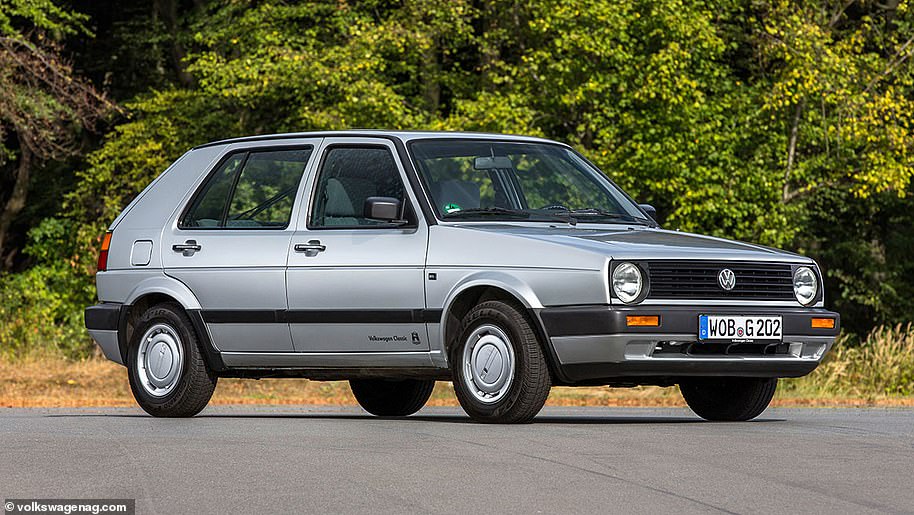
The Mk2 Golf proved extremely popular between 1983 and 1991, amassing approximately 6.3 million sales worldwide
The Golf II was larger and more aerodynamic than its predecessor, but retained much of the same design language to preserve the DNA of the nameplate.
Styling changes included a reshaped rear end with the brake light cluster moved higher up.
But the real changes were the technological innovations, including anti-lock brakes, power steering and all-wheel drive.
By the time production ended in the summer of 1991, a total of 6.3 million units of the second generation had been sold.
Wave III: 1991 – 1997
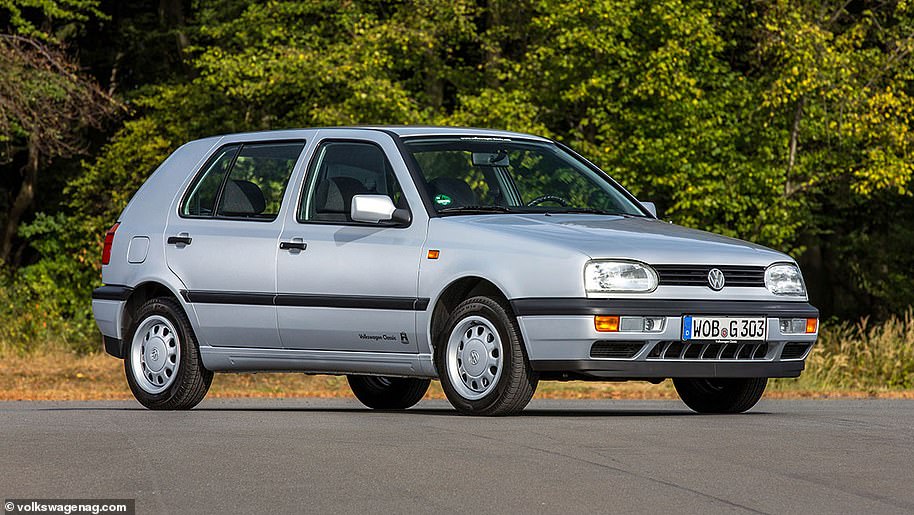
When the Mk3 Golf arrived in 1991, it looked very different and had a more aerodynamic shape. By 1997, almost 5 million had been sold worldwide
When the third generation Golf came on the market in 1991, it looked clearly different.
It was the first to feature a ‘wedge’ shape designed to improve aerodynamic efficiency, while engineers increased its footprint by widening the track and lowering the car to give it more presence.
‘When we switched from the first to the second Golf, we made the car bigger, installed more powerful engines and gave it better handling. In the third generation, design now plays a greater role. We have found a look that is typical of the Golf and that radiates safety and quality,” said Herbert Schäfer, VW’s chief designer at the time.
Volkswagen also ushered in a new era of safety with the Golf III, selling it with front airbags from 1992 – later followed in 1996 with the introduction of side airbags.
The Mk3 sold almost 5 million units before it was replaced.
Wave IV: 1997 – 2003
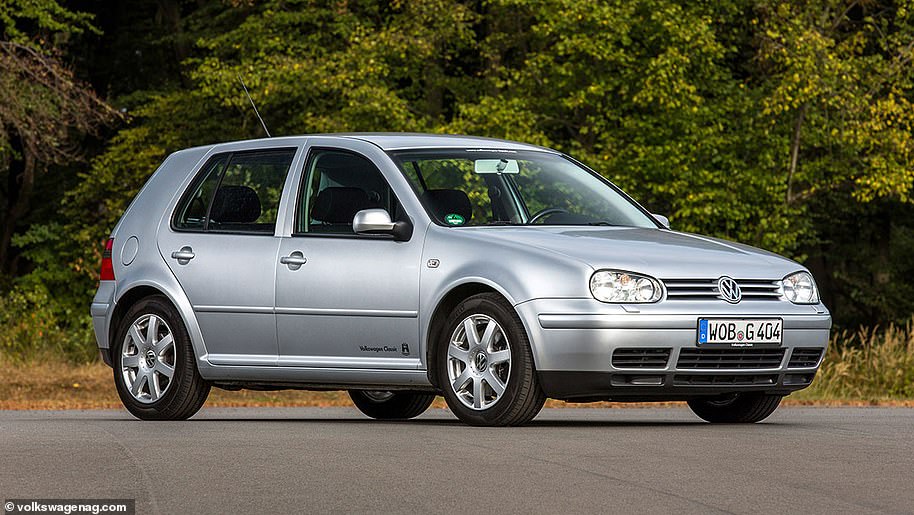
A more prominent C-pillar was the distinguishing feature of the Mk4 Golf. It also introduced a host of new technologies to make it more attractive to family car buyers. Nearly 5 million copies were sold
The fourth version of the Golf appeared in 1997 and again there was a drastic redesign of the hatchback.
The roof was extended and the rear was given a steeper, box-like shape. The traditional C-pillar was also lengthened to give it more prominence in the overall design.
Not only did it look different, VW wanted the Mk4 to feel more premium than ever before – and it certainly generated a lot of appeal, with a total of 4.99 million sol worldwide.
It also featured a number of new safety innovations, including the debuting 1998 Electronic Stability Control (ESC).
The Mk4 also brought to market VW’s own designed DSG dual-clutch gearbox, which remains one of the best automatic transmissions today.
It was also the Golf generation that saw it overtake the legendary Beetle in terms of total units. On June 25, 2002, Golf number 21,517,415 rolled off the assembly line, making it the most built Volkswagen of all time.
Wave V: 2003-2008
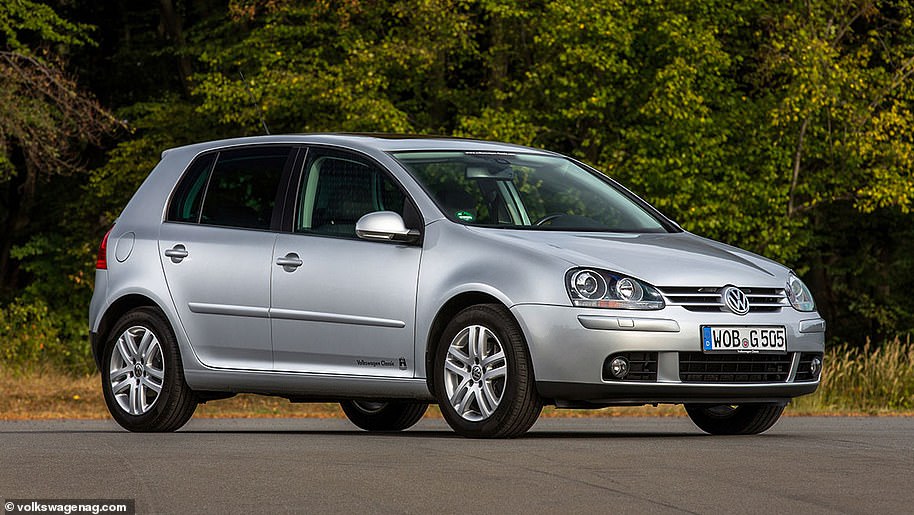
The Mk5 Golf sold the car’s DNA, selling a whopping 3.4 million units around the world
In 2003, the Golf reached a new milestone: it became the best-selling car from Germany for almost three decades.
It earns the nameplate title ‘das Auto’ just as the fifth-generation car hits showrooms.
It continues the Golf DNA and combines the characteristic C-pillar, the powerful shape of the rear, a sporty front and an all-round muscular silhouette.
On a technical level, it had enough: a laser-welded body, rear side airbags, four-point rear suspension, new seven-speed DSG, bi-xenon headlights, rain sensor and panoramic sunroof.
The Mk5 was also the first Golf to diversify into the MPV segment with the more powerful Golf Plus in 2006 and Volkswagen sold a total of 3.4 million units, spread across all derivatives, to customers around the world.
Wave VI: 2008 – 2012
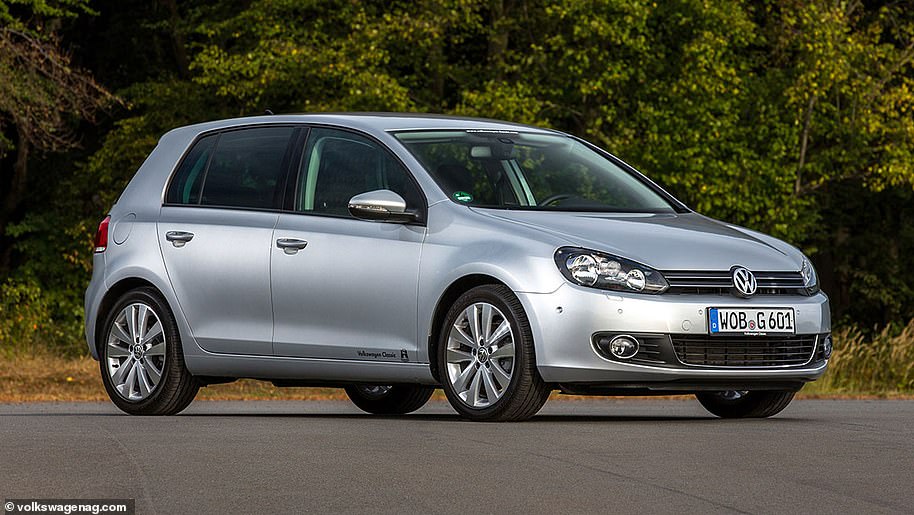
The Mk6 Golf had not been on sale for very long, but it still generated a staggering turnover of 2.85 million in four years between 2008 and 2012
A sleeker design was introduced for the Golf VI launched in 2008, as Volkswagen aimed to increase the hatchback’s premium appeal and safety technology.
It passed Euro NCAP crash tests with a five-star rating, with this generation of Golf introducing the knee airbag for the first time to give drivers extra protection during collisions.
The Mk6 also introduced us to a number of high-tech assistance systems never before seen in a family hatch.
Automatic high beam control Light Assist was first used in the fifth-generation model, as well as ParkAssist, Hill Start Assistant, electronic damper control, a fuel-saving start-stop system and LEDs used as part of a rear light cluster.
Its luxurious, sharp looks and extensive equipment earned the Mk6 ‘World Car of the Year’ status and VW sold 2.85 million units in just four years before the Mk7 arrived.
Wave VII: 2012 – 2019
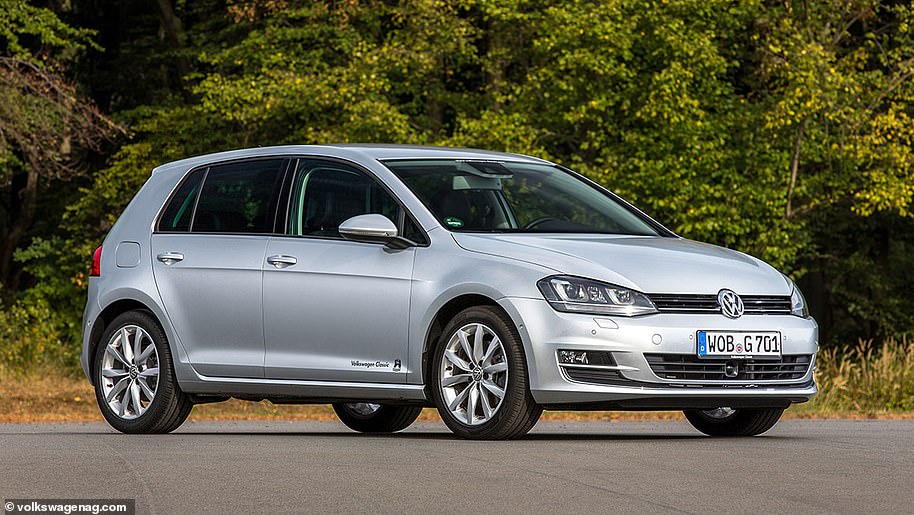
The Mk7 Golf was the first to debut both an electric – e-Golf – variant and a hybrid option. Nearly 6 million were sold worldwide
Although the Mk7 Golf seemed to retain the same aesthetic as the Mk6, under the skin it was very different.
Launched in 2012, it was the first Volkswagen to use the brand’s revolutionary and lightweight modular transverse kit (MQB) platform, saving around 100 kg of weight. This in turn improved fuel economy by as much as 23 percent on certain engine variants.
This completely changed the look, feel and functionality of the Golf, shifting the front wheels further forward to reduce overhangs at each corner of the car and lengthening the bonnet for a more premium look. It also significantly improved interior space.
Volkswagen’s then chief designer Klaus Bischoff said: ‘The vehicle’s cabin visually moves backwards, creating a so-called “cab-backward impression”.
This is what we call the proportions of luxury class vehicles, where the hood is long and the cabin is set very far back. That is why the Golf VII has proportions that you would otherwise only find in higher segments.’
The Mk7 also debuted a digital instrument cluster and brought even more luxury-class assistance systems to the compact class.
An electric e-Golf and hybrid GTE variant were added to the range, broadening its appeal. It saw VW shift nearly 6 million units in total.
Wave VIII: 2019 – present
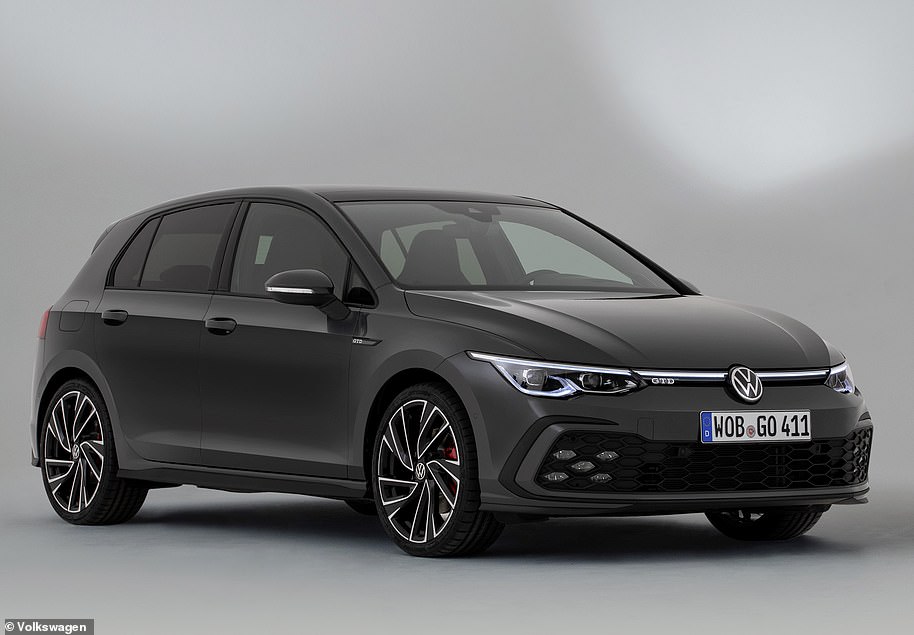
The Mk8 Golf will be the last with a combustion engine before VW switches to electric vehicle production before the end of this decade
The current Golf arrived in 2019 and Volkswagen has packed it with a wealth of technology.
The popular family hatchback features a semi-autonomous mode that allows the car to drive itself at speeds of up to 130mph (although this is not legal in Britain), a communications system that talks to other vehicles and a call-ahead feature to reserve a table. your favorite restaurants.
It was the first model in its segment to feature a ‘fully digital cockpit’, with the driver display and instrument cluster bundled into a new 10.25-inch screen.
It underwent a midlife facelift in 2024. As the last Golf with a combustion engine on sale, it should remain in showrooms until the last years of the decade.
